Questões de Língua Inglesa da FUNDATEC Processos Seletivos (FUNDATEC)
Lista completa de Questões de Língua Inglesa da FUNDATEC Processos Seletivos (FUNDATEC) para resolução totalmente grátis. Selecione os assuntos no filtro de questões e comece a resolver exercícios.
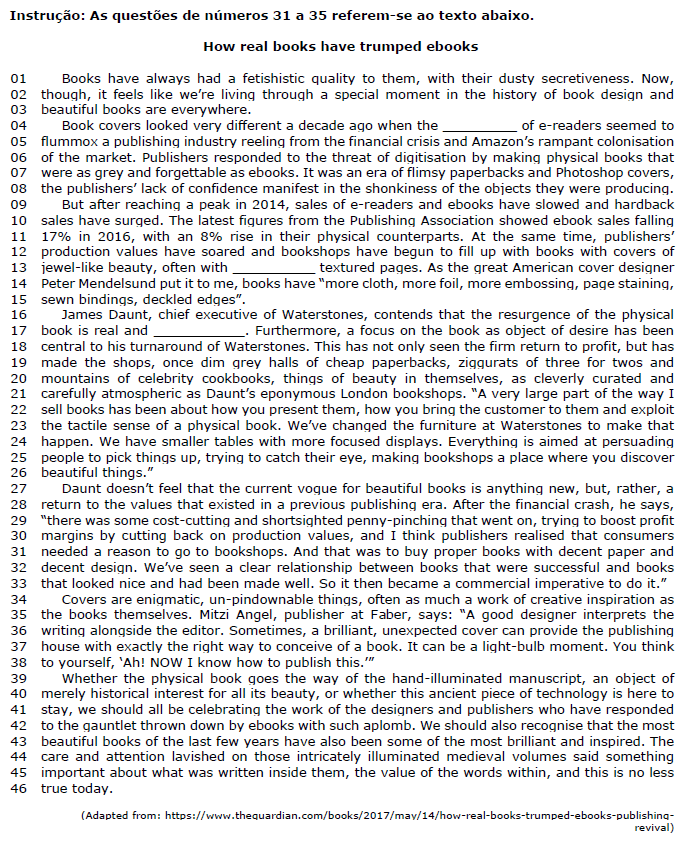
Consider the statements below:
I. The plural of the word beauty (l.40) follows the same rule that explains the formation of the plural form displays (l.24).
II. The plural of crisis (l.05) is made by dropping is and adding es.
III. The rule that explains the formation of values (l.30) and pages (l.13) is the same.
Which ones are correct?
- A. Only I.
- B. Only III.
- C. Only I and III.
- D. Only II and III.
- E. I, II and III.
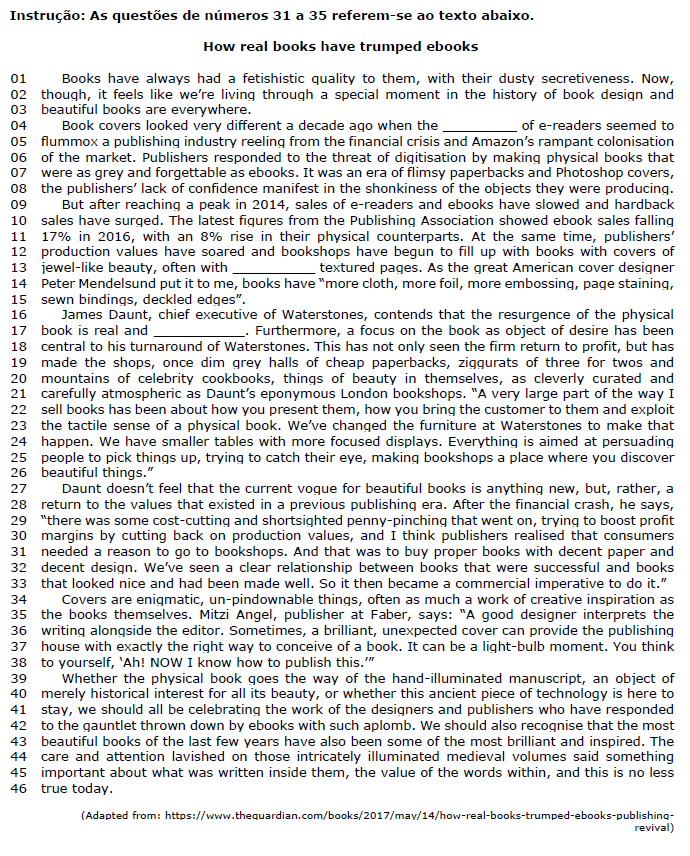
Analyse the statements below, considering the context of occurrence in the text.
I. Considering the grammatical context, the expression have always had (l.01) should be translated to sempre tiveram.
II. The phrasal verb went on (l.29) has the same meaning as the expression took place.
III. The verb persuading is in the ing form due to the presence of the preposition at (l.24).
Which ones are correct?
- A. Only I.
- B. Only III.
- C. Only I and III.
- D. Only II and III.
- E. I, II and III.
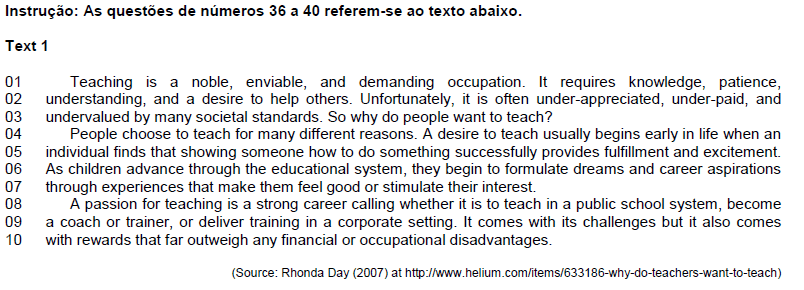
The only correct grammar rule, using examples from the text, is
- A.
adverbs of frequency are always used after verbs, as in it is often under-appreciated (line 02).
- B.
adjectives can be used in a noun position after verbs as in feel good (line 07).
- C.
the use of whether and if is interchangeable, as in whether it is to teach or (line 08).
- D.
abstract nouns like knowledge (line 01) and understanding (line 02) are not preceded by indefinite articles.
- E.
the prefix out- , as in outweigh (line 10), always gives a verb the meaning of bigger.
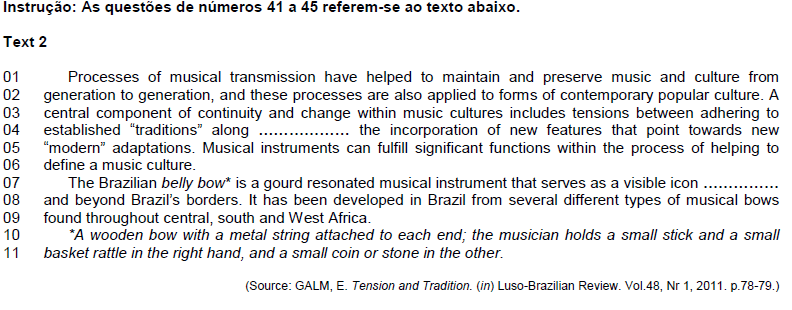
The blanks in lines 04 and 07 can best be filled in, respectively, with the prepositions
- A.
within with
- B.
in at
- C.
with within
- D.
for inside
- E.
at in
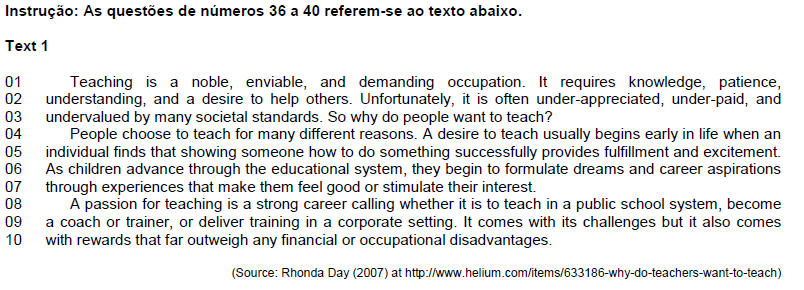
The words below were taken from the text and are used according to two grammatical categories; all of them in this text are, respectively, an adjective and a noun, EXCEPT
- A.
enviable knowledge (line 01, both occurrences).
- B.
demanding understanding (line 01 and 02, both occurrences).
- C.
societal individual (lines 03 and 05).
- D.
early rewards (lines 04 and 10).
- E.
good calling (lines 07 and 08).
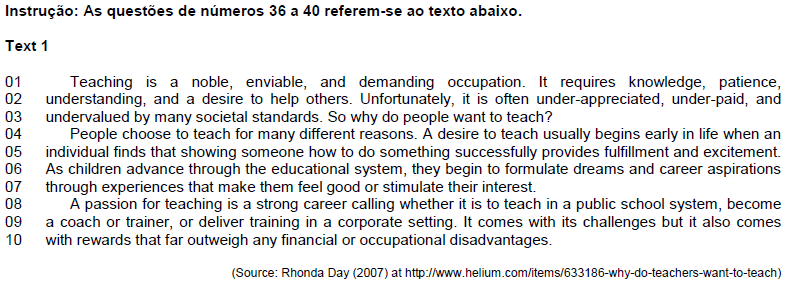
The function word As, in As children advance through the educational system (lines 06),
- A.
is used to show a comparison.
- B.
is used for referring to what is known.
- C.
means in the same way.
- D.
means when or while.
- E.
means although.
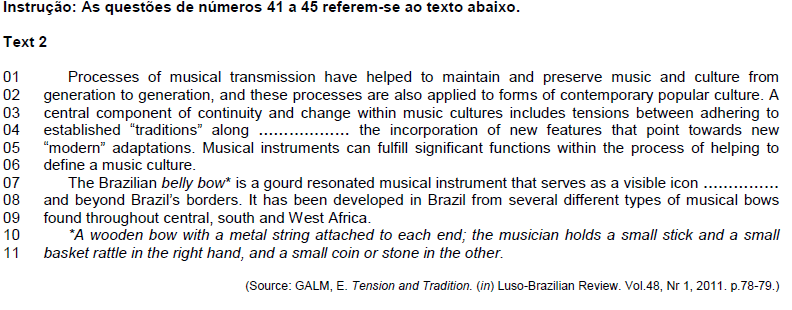
The term bow has several meanings, besides one in the text. It is used correctly in all of the sentences below, EXCEPT:
- A.
The organizers of the event can take a welldeserved bow.
- B.
There were three goldfish swimming in the bow.
- C.
She wrapped the present and tied it in a beautiful bow.
- D.
Everyone has seen their picture on the bow of the Titanic.
- E.
Do people still have to bow to the Queen of England?
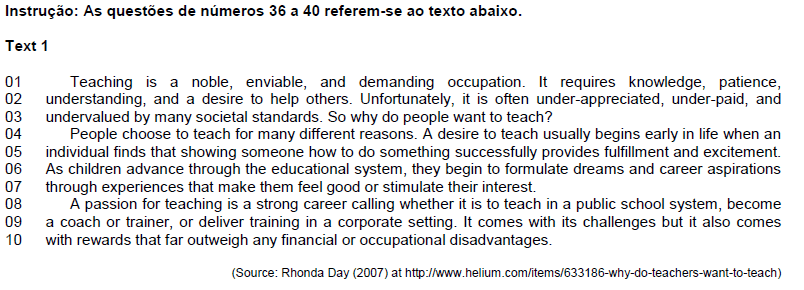
The text introduces pros and cons of being a teacher; from this introduction one can assume it is written from a perspective that is
- A.
very positive.
- B.
fairly positive.
- C.
neutral.
- D.
fairly negative.
- E.
very negative.
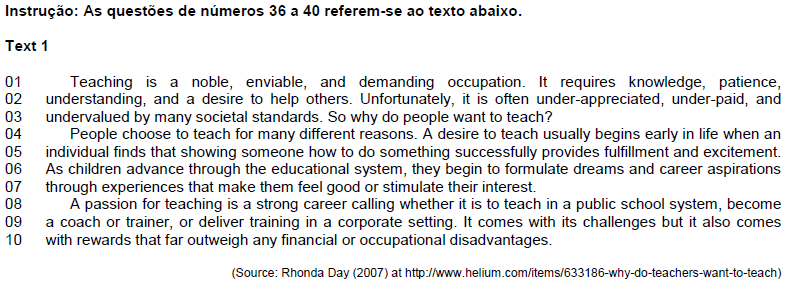
According to the text,
- A.
despite difficulties teachers encounter, not too many people want to become teachers.
- B.
pedagogical training opens up a few different job opportunities.
- C.
public schools are the ones that require the most passionate professionals.
- D.
experiences in early childhood lead to a fulfilling professional career.
- E. the society acknowledges the value of teaching professionals.
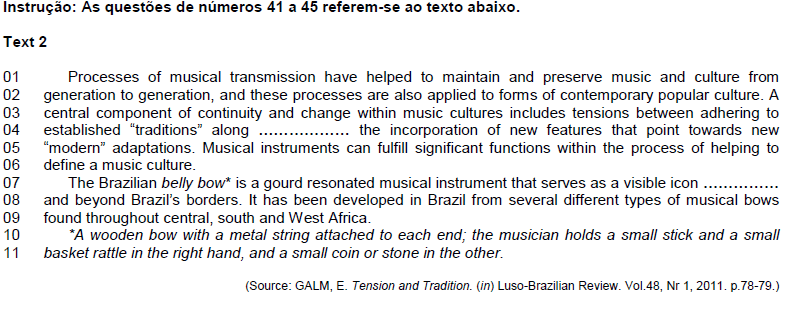
The text is an introduction to a study on
- A.
how musical instruments have developed.
- B.
the role of music in Afro-Latin cultures.
- C.
the function of music in changing cultures.
- D.
the role of instruments in the music culture.
- E.
the influence of African cultures on music.


